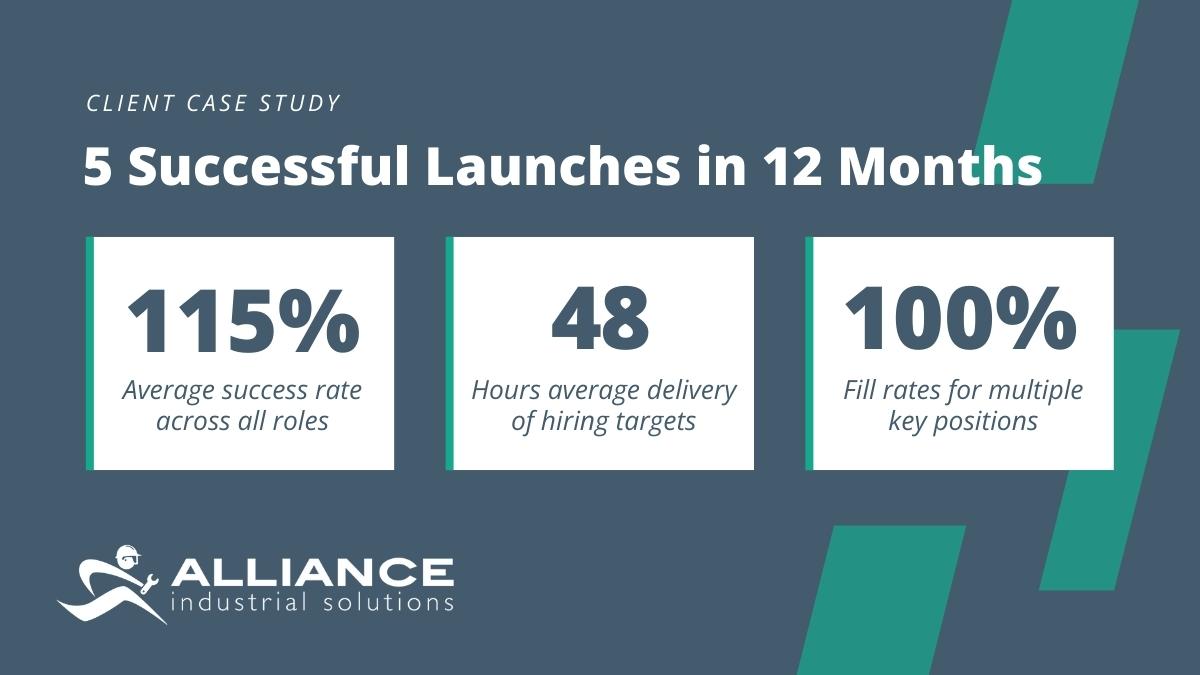2.1 million manufacturing jobs to remain unfilled by 2030, incurring a staggering cost of $1 trillion for companies.
Yes, trillion. This isn’t a typo.
These sobering stats from The Manufacturing Institute shine a spotlight on how the manufacturing industry continues to grapple with a persistent shortage of skilled workers, with 70% of manufacturers facing difficulties in securing the workforce they need.
The skills gap in manufacturing is an issue that has long plagued the industry, predating the COVID-19 pandemic, making it vital to explore the factors contributing to this ongoing challenge.
Why Aren’t There Enough Skilled Workers?
Manufacturing executives have been losing sleep over this question for years, and several factors have contributed to the continuing labor shortage:
- Changing Demographics: One significant reason for the skills gap is the changing demographics of the manufacturing workforce. As experienced workers retire, new workers often lack the necessary skills and knowledge to operate in today’s advanced manufacturing environment.
- Lack of Interest: A declining interest among younger workers in pursuing blue-collar careers has added to the problem.
- Decreased Migrant Population: The reduced number of migrant workers, a traditional source of labor in the industry, has further exacerbated the issue.
- Worker Expectations: Expectations of a younger workforce have evolved. Workers are looking for higher pay, increased flexibility, and improved work-life balance, and many organizations have not adapted quickly enough.
- Pandemic Recovery: The Manufacturing Institute’s study found that nearly 1.4 million manufacturing jobs were lost during the early days of the pandemic, setting the US labor force back by more than a decade. Only 63% of those manufacturing jobs have since been recovered.
- Digitization: The changing nature of manufacturing jobs, marked by increased automation and technology, demands more technical skills than previous positions, leaving many potential employees underqualified.
Current Manufacturing Job Market
The US manufacturing industry continues to grow, with over 450,000 manufacturing jobs open, according to the current data from the US Bureau of Labor Statistics.
This strong demand highlights the ongoing manufacturing skills gap and the challenge of finding qualified workers with advanced manufacturing skills.
Steps Your Company Can Take To Fill the Skills Gap
Addressing the skilled worker shortage requires a significant investment in terms of time and resources. These challenges did not arise overnight, and they will not be resolved overnight. To ensure your organization’s competitiveness in a candidate-driven market, take the following steps.
Step 1: Keep Up With Industry Changes
The manufacturing landscape evolves continuously. To remain competitive, ensure that your team’s skills and knowledge are up to date through ongoing training, including advanced manufacturing training programs, and compliance with industry regulations. Additionally, consider offering:
- Continuous upskilling and reskilling opportunities
- Free training, licensing, and certification for all employees
- Internships and apprenticeship programs
- Diversity, Equity, and Inclusion (DEI) initiatives for the growing number of minorities entering the industry and minority-owned manufacturing companies
Integrate these efforts into your recruiting and onboarding processes, positioning your organization as a forward-thinking company that offers growth opportunities.
Step 2: Embrace and Educate On New Technology
The manufacturing industry has undergone a technological revolution, with automation, robotics, and advanced programming becoming integral components of modern production processes.
Equip your workforce with the skills needed (including technical certifications for manufacturing) to advance and thrive in the digital landscape, such as:
- Robotics and Automation: Introduce your staff to robotics and automation systems, showing them how it enhances efficiency and precision. Employees should learn to program and operate these machines effectively. These technologies can streamline production, reduce errors, and improve output quality.
- Advanced Programming: As manufacturing equipment becomes more sophisticated, understanding programming languages and codes is crucial. Training sessions should include topics like CNC programming for machining processes and software programming for managing automated systems.
This investment will keep your team competitive and adaptable as their roles continue to be redefined.
Step 3: Offer Mentorship Programs
Mentorship programs have gained traction as a valuable tool to address the manufacturing skills gap, as they can help bring in needed talent and ensure that workers enter the workforce with in-demand skills.
- High School Mentorship: Collaborate with local high schools to offer mentorship opportunities for students interested in manufacturing careers. Students can gain hands-on experience while completing their education, and companies can identify and nurture promising talent from an early stage.
- Financial Support: In some cases, mentorship programs can include financial assistance to support students’ education. This not only attracts potential workers but also removes financial barriers to entry, making the industry more accessible to a broader range of individuals.
- Degrees and Certifications: Mentorship programs can be structured to provide participants with various degrees, licenses, and certifications. By the time they enter the workforce, they should possess the qualifications necessary for their roles. This approach ensures that workers have the required skills right from the beginning.
Step 4: Engage Diverse Sources of Talent
Bridging the skills gap requires tapping into diverse talent pools, allowing manufacturers to access a broader range of skills and perspectives. Consider the following:
- Veterans: Programs like Manufacturing Institute’s Heroes Make America are excellent resources for manufacturers. With nearly 200,000 service members returning home and transitioning to civilian life each year, these individuals possess discipline, technical skills, and a strong work ethic — making veterans valuable additions to your workforce.
- High School Trade Programs and Vocational Tech Schools: Collaborate with local high schools, trade programs, and vocational tech schools to identify and support students interested in pursuing manufacturing careers. Such partnerships can ensure that future employees receive relevant training, and allows employers to build a larger talent pipeline.
- Adult Education: Encourage adult education and reskilling programs for individuals seeking to transition into manufacturing. These programs can provide second chances and new opportunities for those looking to join the workforce.
- Minorities and Women: Increase outreach efforts to attract individuals from underrepresented groups to the industry. Creating an inclusive work environment and implementing diversity initiatives can contribute to closing the manufacturing skills gap.
- Felons Re-Entering the Workforce: Support reintegration programs that help individuals with criminal backgrounds re-enter the workforce. These programs offer a pathway to employment and address social challenges.
Finding The Right Skilled Workers Is Possible
The manufacturing skills gap remains a critical issue. By implementing these steps, you can recruit, train, and retain the next generation of workers, bridging the skills gap effectively over time.
Despite a shortage of skilled labor, Alliance Industrial Solutions can help your manufacturing company find the right workers at the right time and at the right cost.
Let our highly experienced recruiters search our expansive database of candidates, from technicians and welders to machinists and engineers. Manufacturing and logistics staffing is our specialty and we can often pre-qualify candidates in just a few days.





